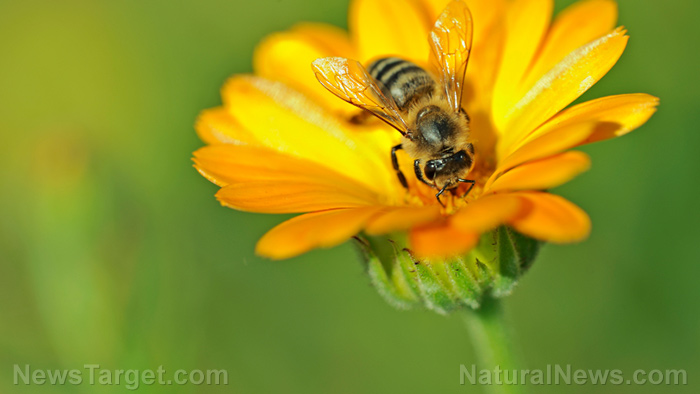Memory of honeybees influenced by scents
04/03/2019 / By Ralph Flores

It turns out, people aren’t the only ones affected by scents: In a study led by scientists from the University of Cologne and the Free University of Berlin, they found that honeybees are similarly affected, with certain scents affecting their behavior and memory. The finding, which they published in the journal eNeuro, came from an investigation of the insects’ associative learning and memory behaviors.
There’s just a slight difference: Unlike people, who have noses that contain olfactory nerves for smelling, honeybees process scents in their so-called “mushroom body,” which contains their olfactory neurons. This area also houses the honeybees’ short-term memory, which, in turn, is triggered by the scents that they process.
“Using high-resolution [fluorescence] microscopy, we finally found out where the bee’s short-term memory is located,” explained co-author Martin Nawrot, also a zoologist from the University of Cologne.
The study is the first of its kind to investigate how neuronal plasticity – which is the ability of cells to change and be modified – is affected after being exposed to a particular scent. In particular, the team identified plasticity as a measure of learning for the honeybees. If the insect is rewarded for going to a certain point, it then learns to connect both points — a behavior they called memory trace. Once the animal — in this case, the insect — is repeatedly exposed to a memory trace, it develops to immediately elicit the learned response after being exposed to the stimulus. This study involved exposing honeybees to different scents. The insects were presented with both “rewarded” odors, which comes with sugar water, and unrewarded odors. After the insects were conditioned, they were then randomly exposed to scents that they recognized to be a rewarded odor and those that they were unfamiliar with.
The researchers found that bees responded to scents that they have associated with a reward. Based on how the neurons in the insect’s mushroom body reacted, the team noted that “rewarded” odors triggered its neurons, which indicate a conditioned behavior. This behavior continued, even after the researchers removed the sugar water associated with the scent. Conversely, those that were not associated with a rewarded odor at the beginning, as well as unfamiliar scents during the experiment, did not have the same reaction.
“The more pronounced the change in plasticity after training with a certain scent was, the more reliably we observed the newly acquired [behavior] in the bees,” he added. “There is a clear correlation between the strength of a highly localized plasticity change in the brain and the animal’s learning success!”
Can bees smell danger, though?
For Nawrot and his team, this study lends itself to a deeper understanding of how a honeybee’s memory forms in its brain. This, in turn, could lead to more studies that are targeted to protecting honeybees — especially from pesticide exposure.
In a recent study in the journal Insects, researchers from Ohio State University pointed out that even insecticides and pesticides that are reported to be “safe” for honeybees become toxic once these insects are exposed to a mixture of these chemicals. The team noted that these lethal cocktails can decrease the survival rate of honeybee larvae by up to 60 percent after exposure.
However, a recent push by the Environmental Protection Agency (EPA) will further threaten an already endangered population: In an “emergency exemption,” the agency granted the use of the insecticide sulfoxaflor, an insecticide known to greatly lower the ability of bees to reproduce. Previously, the EPA classified the insecticide as “very highly toxic” to bees; it has now been changed to “low residual toxicity.”
Indeed, the study from Germany can lead to strides in understanding how honeybees can use scents to learn, but the question remains — can they survive long enough to learn to smell danger?
Sources include:
Tagged Under: bees, conditioned behavior, Conditioning, honeybees, insecticide, insects, learning behaviors, memory trace, neuronal plasticity, pesticide, research, toxic chemicals

















